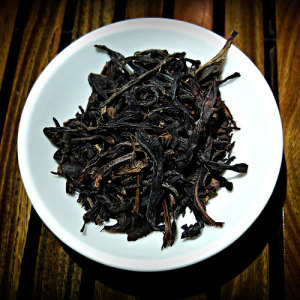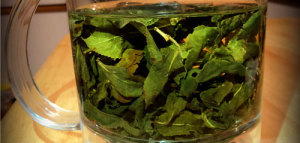Dragon shapes come to life as oolong tea leaves unfurl while steeping. Thus the Chinese meaning of oolong is understandably “black dragon”. As the largest category of tea, it’s surprisingly the most difficult to produce.
Processing
 After harvesting, leaves are wilted before being rolled. This bruising exposes juices to the air, starting oxidation. Oolong has many variations because oxidation levels can range anywhere from 8 to 85%. That’s quite a swing!
After harvesting, leaves are wilted before being rolled. This bruising exposes juices to the air, starting oxidation. Oolong has many variations because oxidation levels can range anywhere from 8 to 85%. That’s quite a swing!
Teas on the lower end of the spectrum have a light, floral taste whereas those at the higher end will be much darker. Originally a product of China, it can now be found in many other regions. Often considered the connoisseurs’ tea of choice, they are best known for their lingering floral aromas.
Chinese Oolongs generally fall into three leaf-style categories: rolled, strip and broken.
- Rolled oolongs such as Tie Guan Yin are processed by machine or by hand until the leaves take on a ball-like shape.
- Strip style oolongs are usually found in the Phoenix Mountains. They’re rolled using a different process that allows them to maintain a thin, wiry appearance.
- Broken style leaves are commonly found in the Wu Yi Mountains.
Taiwanese oolongs usually come rolled. High mountain oolongs, especially Alishan, are among the most prized. Oriental Beauty is a famous Taiwanese oolong using leaves bitten by a leaf hopper insect. This slowly starts oxidation while the leaves are still on the plant.
Brewing Style: Eastern
 Oolong is traditionally brewed either using gaiwans or small clay teapots. A higher ratio of leaves to water is used to achieve concentrated flavor and aroma. Depending on the variety, water temperatures are usually around boiling or just under. Infusion times are short, usually no longer than 30 to 45 seconds. This style of brewing is often called the gongfu method and it allows the leaves to be used many times over.
Oolong is traditionally brewed either using gaiwans or small clay teapots. A higher ratio of leaves to water is used to achieve concentrated flavor and aroma. Depending on the variety, water temperatures are usually around boiling or just under. Infusion times are short, usually no longer than 30 to 45 seconds. This style of brewing is often called the gongfu method and it allows the leaves to be used many times over.
Brewing Style: Western
 Making oolong tea using a teapot or teacup can be tricky business because the leaves expand when brewing. Tea balls or novelty infusers are not recommended for this reason. If the leaves are too restricted, the full flavor won’t be achieved.
Making oolong tea using a teapot or teacup can be tricky business because the leaves expand when brewing. Tea balls or novelty infusers are not recommended for this reason. If the leaves are too restricted, the full flavor won’t be achieved.
Gravity steepers work well because they’re easy to use and provide a lot of room for the tea to unfurl. Water temperatures will usually be near boiling or just under, with infusion times between 3 and 5 minutes.
If you like this article you might enjoy these as well:
Getting the Most out of Your Expensive Oolong Tea
The 9 Dragons We Would Love to Share an Oolong With
note that this article was previously published on October 6th, 2014




